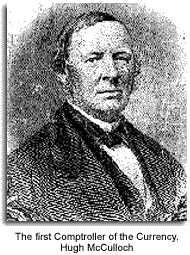Currency Act
The American colonies struggled with currency issues from their inception. Operating under the prevailing mercantile system, the settlers provided relatively cheap raw materials to the mother country in return for more expensive manufactured goods; the difference in value was balanced by payments in hard money.
 Many early settlers had dreamed of finding wealth in North America comparable with that of New Spain, but those hopes were not realized. As a result of these conditions, little hard money remained in the colonies and business was usually conducted on the barter system. Beaver pelts, tobacco and corn were made Legal Tender in various places in the early years of North American settlement.
The pound sterling was unusual in the colonies. Most of the coins that circulated — French crowns, Spanish doubloons and Dutch ducats — entered through illegal trade and created a confusing picture because they frequently carried different values from one colony to another.
Under these conditions it was natural for the colonies to resort to paper money. Massachusetts, an innovator in many fields, tried several approaches to cure the currency shortage:
Many early settlers had dreamed of finding wealth in North America comparable with that of New Spain, but those hopes were not realized. As a result of these conditions, little hard money remained in the colonies and business was usually conducted on the barter system. Beaver pelts, tobacco and corn were made Legal Tender in various places in the early years of North American settlement.
The pound sterling was unusual in the colonies. Most of the coins that circulated — French crowns, Spanish doubloons and Dutch ducats — entered through illegal trade and created a confusing picture because they frequently carried different values from one colony to another.
Under these conditions it was natural for the colonies to resort to paper money. Massachusetts, an innovator in many fields, tried several approaches to cure the currency shortage:
- Late in the 17th century, the colony issued bills of credit, a form of paper money that was backed by anticipated tax collections. Used initially for paying soldiers, the idea became popular and was later adopted by other colonies.
- In the early 18th century, Massachusetts turned to the “land bank” idea to expand its currency. Under this scheme, paper notes were issued to landowners willing to mortgage their properties. The idea won widespread support among farmers, who traditionally had both land holdings and heavy indebtedness. Urban dwellers opposed the idea and successfully persuaded Parliament to outlaw such schemes in 1740. That action outraged land bank supporters and caused severe economic problems. The issue did not disappear and remained a favorite of radical rural interests.
Against this backdrop, the government headed by George Grenville supported legislation in 1764 to reform the colonial currency situation. British merchants had long complained about the tendency of Americans to try to settle their debts with paper money of dubious value. The Currency Act provided for the following:
- Paper money could longer be used as legal tender in the North American colonies.
- No new paper money could be issued and that already in circulation was to be retired according to a prescribed timetable.
This reform was a clear victory for the conservative, hard money forces and a disaster for the working class elements, which lost a cheap means of discharging their debts. In the short space of a few months, Grenville had managed to ignite the passions of the two extremes of American society: The laborers saw their hopes thwarted by the Currency Act and the wealthier merchant class was stung by the
Sugar Act.
The paper money issue is a recurring issue in American history. See
Origins of the Money Issue,
Jackson and Money, the
Greenback Movement and the
Triumph of Hard Money.
See also timeline of the
American Revolution.
 Many early settlers had dreamed of finding wealth in North America comparable with that of New Spain, but those hopes were not realized. As a result of these conditions, little hard money remained in the colonies and business was usually conducted on the barter system. Beaver pelts, tobacco and corn were made Legal Tender in various places in the early years of North American settlement.
The pound sterling was unusual in the colonies. Most of the coins that circulated — French crowns, Spanish doubloons and Dutch ducats — entered through illegal trade and created a confusing picture because they frequently carried different values from one colony to another.
Under these conditions it was natural for the colonies to resort to paper money. Massachusetts, an innovator in many fields, tried several approaches to cure the currency shortage:
Many early settlers had dreamed of finding wealth in North America comparable with that of New Spain, but those hopes were not realized. As a result of these conditions, little hard money remained in the colonies and business was usually conducted on the barter system. Beaver pelts, tobacco and corn were made Legal Tender in various places in the early years of North American settlement.
The pound sterling was unusual in the colonies. Most of the coins that circulated — French crowns, Spanish doubloons and Dutch ducats — entered through illegal trade and created a confusing picture because they frequently carried different values from one colony to another.
Under these conditions it was natural for the colonies to resort to paper money. Massachusetts, an innovator in many fields, tried several approaches to cure the currency shortage: